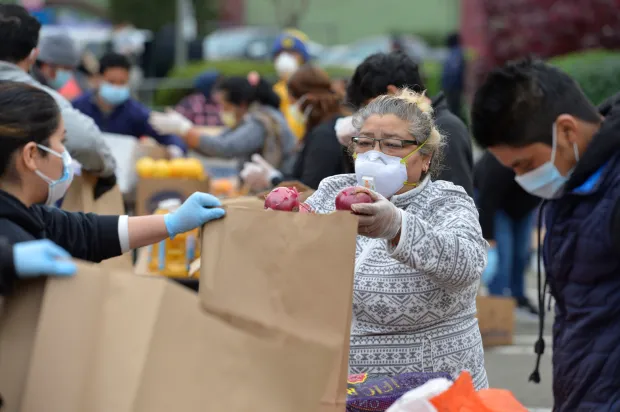
Nearly a quarter of the households in Marin lack the income for a decent standard of living, according to a report by the United Ways of California.The study — titled “How Much it Costs to Struggle: The Real Cost Measure in California 2023″ — estimated what families of different sizes must pay for such necessities as housing, food, child care, transportation and taxes. Then it compared that cost to the counties’ average household incomes.
The recently released report used pricing and census data from 2021, prior to the recent surge in inflation.
In Marin, according to the study, it cost a household with two adults, one preschooler and one school-aged child $42,636 a year for housing, $12,960 for food, $10,572 for health care, $27,636 for child care, $11,544 for transportation, $30,203 for taxes and $10,536 for miscellaneous expenses. That amounted to $146,087.
Marin’s average household income was $44,278 below that figure, the study says.
“I think $146,000 is a little less than I would have estimated,” said Beatriz Chimal, who bought a home in Novato last year with her husband Jose Luis Chan. “Marin is super expensive.”
“Housing is our biggest expense,” said Chimal, who has a 7-year-old son and 5-year-old daughter. “A lot of our income goes into our mortgage.”
That jibes with the United Ways study, which found that 58% of households in the state earning less than the cost of living are spending more than 30% of their income on housing.
An assessment completed this spring by Community Action Marin, a nonprofit that provides services to Marin’s poorest residents, found that renters in the county need to earn 3.5 times the minimum wage to afford the average asking rent.
According to the assessment, a Marin renter needs to earn at least $9,177 per month, or $52.94 per hour. But the state minimum wage is only $15 per hour. Home health and personal care aides are paid $16.97 per hour. Child care workers make $18.81 per hour.
“Housing is such a significant basic need that it drives everything else,” said Robert Palmer, the nonprofit’s director of learning and development, who worked on the report.
Palmer said the nonprofit, a “community action agency” under the Economic Opportunity Act of 1964 to fight the “war on poverty,” regularly surveys clients to understand their needs.
Palmer said 80% of the 200 people surveyed over the last six months said they had only enough money saved to cover their basic needs for a month if they were to lose their primary source of income. He said 56% of the respondents said they would run out of money within two weeks.
“People have this balancing act going on,” Palmer said. “They are just barely getting by. If they get injured or lose their job, they have no emergency savings.”
Chimal, 32, has a degree from Sonoma State University and works as a quality control analyst at a pharmaceutical company. She might not have been able to get her degree if she hadn’t received a voucher from the Marin Child Care Council that gave her access to free child care.
“My son was 3 months old, and I wanted to go back to school,” Chimal said, “but I didn’t have any way to pay for child care.”
Aideen Gaidmore, executive director of the Marin Child Care Council, wrote in an email that Chimal “receives child care funding through our agency, with a child care voucher program/parent support we run funded by Marin Community Foundation to support working families and help them become self-sufficient.”
Gaidmore said the foundation has indicated it plans to stop funding the five-year program after the 2023-24 fiscal year.
Gaidmore said the United Ways estimate for child care in Marin is low. She said child care for one preschooler and one school-age child in Marin costs about $30,000 per year.
The United Ways study found that 54% of households in California with children under the age of 6 are struggling to make ends meet.
Another major finding of the study was that while families of all races in California face financial challenges, those led by people of color are disproportionately affected. In Marin, it found that 82% of African American residents are struggling to afford necessities, compared with 57% of Latino residents, 41% of Asian residents and 21% of White residents.
However, the study said, “It’s a common misconception, often promoted by our media and culture, that poverty almost exclusively affects communities of color.”
It noted that the latest data show that the majority of households in California earning less than real cost of living are Latino households — more than 1.7 million — followed by White households at about 1.2 million.
“In reality, poverty is a pervasive issue that families of all races and ethnicities grapple with in California,” the study says.
The Community Action Marin assessment found that 42.5 % of Marin residents living in poverty are White residents, 24.4% are Latino residents, 4.6% are Asian residents and 3.6% are Black residents.
Used with permission by the Marin Independent Journal.
Read article at the Marin IJ and subscribe to the Marin IJ.
